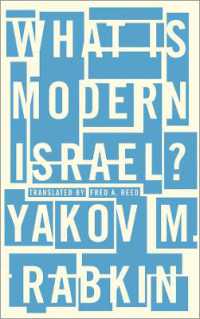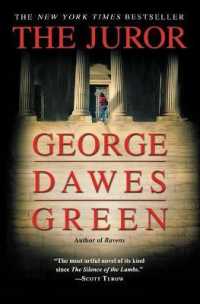Full Description
In the last decades of the nineteenth century, photography underwent one of the most momentous transformations in its history, a renegotiation of the camera's relationship to the visible world. Reasoned and Unreasoned Images considers in detail the work of three photographic investigators who developed new uses for the medium that centered on "the photography of the invisible": Alphonse Bertillon, Francis Galton, and Etienne-Jules Marey. Bertillon attempted to establish a "science of identity" by making photographic records of criminal bodies. Galton may be said to have taken photographs of ideas: he sought to create accurate yet abstract images of such entities as "the criminal" and "the lunatic." And Marey, a physiologist, created photographic visualizations of nonvisible events—the positions through which bodies pass so quickly that they cannot be seen. Ellenbogen approaches the work of these photographers as a means to develop new theoretical perspectives on questions of broad interest in the humanities: the relation of photographs to the world and their use as agents of knowledge, the intersections between artistic and scientific images, the place of painting and drawing in photography's historical employment, and the use of imaging technologies in systems of social control and surveillance.
Contents
Contents
List of Illustrations
Acknowledgments
Introduction
Part 1: Criminality, Identity, and the "Unreasoned Image"
1 "To Fix the Human Personality": Archived Bodies and Ideal Lenses
2 Mnemonic Economies or Galleries of Paintings
3 Educated Eyes and Moments of Repose
Part 2: Portraits of the Invisible
4 The Monstrous, the Meaningless, and Margins of Error
5 "The Basis of a Very High Order of Artistic Work"
6 Images and Antecedents
Part 3: Camera and Mind
7 Making Sense
8 Creatures of Reason
Conclusion
Notes
Bibliography
Index








